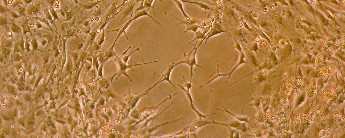 or decades, scientists ridiculed the idea of a “grandmother
cell”, the idea of a localist representation of concepts in the
brain, saying the theory was flawed because if that single cell died
you wouldn't be able to remember your grandmother.
or decades, scientists ridiculed the idea of a “grandmother
cell”, the idea of a localist representation of concepts in the
brain, saying the theory was flawed because if that single cell died
you wouldn't be able to remember your grandmother.
It was a flawed argument, because there would be thousands, maybe millions, of cells representing specific memories of Grandma. Even if there were one generalized cell to rule them all, those millions of specific memories could easily re-create the concept of her. Redundancy is how the brain works, and that's been recognized from the beginning.
It was a shock to me as a grad student that this argument could get traction, yet it became dogma. It became nearly impossible to propose any hierarchical organization to the brain, even though the evidence for it was overwhelming. Then one guy proposed a non-hierarchical fully-connected neural network that was easy to study mathematically. Mathematicians went wild, the field became disreputable, enthusiasm for brain modeling faded, big corporations took over, and we got landed with ChatGPT.
A few courageous cognitive psychologists [1] argued in favor of grandmother cells, but because most people believed memories were distributed, getting funding would have been difficult. Now the cells have been shown to exist.[2]

Cultured neurons Grandma is the one third from the left in the bottom, telling you not to go swimming for an hour after eating. Did the other cells listen? Oh, no, and look how apoptotic they are
This happens a lot in science. In the early days of neural networks, Marvin Minsky ridiculed one promising model by showing that it could not decide parity. For instance, shown a picture of 1000 nuts, it couldn't say whether the number of nuts was even or odd. It's obvious that the human brain can't do this either, but the whole project was dropped and years of research got flushed.
Before that was the set theory ‘disaster.’ Its originator Georg Cantor sank into a depression, thinking his life's work had been in vain, when Bertrand Russell pointed out that his theory couldn't handle the set of all sets that aren't members of themselves. (This is called Russell's paradox.) Never mind that it's merely a word game, like saying God can't create a rock that's too heavy for him to lift. It's a joke, impossible in the real physical world—try creating a set like that sometime—but it became dogma that the foundation of mathematics was “in trouble.”
There are thousands of other examples, most too esoteric to explain easily. Taken together, they raise the question: Why does science get stuck supporting irrational theories?
One reason might be fear. Funding and status depend on social approval. If somebody tried to get funding for a theory that's out of fashion, grant reviewers would just trash the grant, so nobody tries. Another reason is that scientists are strongly discouraged from changing their theory. Their reputations depend not on being correct, but on how many papers they publish. Switch to a new theory, even a better one, and suddenly you're at the back of the pack again. As long as the bean-counters stay in control, those who have 600 papers showing nothing much survive, while those who have one breakthrough paper don't.
A third reason is that academic science is all about finding and studying problems. If the government gives out money to study a problem, they'll take it. Rarely would an academic ever say something is not a problem. They'd be putting themselves out of business. If it becomes dogma that something is a problem, there's a strong incentive to keep it that way.
The concept of dark energy is an example of another type: a theory based on a computer model. People forget that something can't be defined into existence with a model. In this case, somebody proposed that most of the mass-energy in the universe was in dark energy, a term intended to be a ‘placeholder.’ It turned into dogma. NASA's website said, “we're sure it exists.” It turned out that the whole thing was based on some computer model. Then last month another computer model that made corrections for gravitational variations blew it out of the water—in a real sense destroying two-thirds of the universe.
Physicists get all the cool dramatic universe-destroying mistakes, but science in every field as practiced today is full of smaller ones, and they're just as annoying.
[1] Bowers, J. S. (2017). Grandmother cells and localist representations: a review of current thinking. Language, Cognition and Neuroscience, 32(3), 257–273. https://doi.org/10.1080/23273798.2016.1267782 Link
[2] Mackay S, Reber TP, Bausch M, Boström; Elger CE, Mormann F (2024). Concept and location neurons in the human brain provide the what and where in memory formation. Nat Commun. 15, 7926 https://doi.org/10.1038/s41467-024-52295-5 Link
jan 22, 2025. last updated jan 23 2025, 4:31 am
